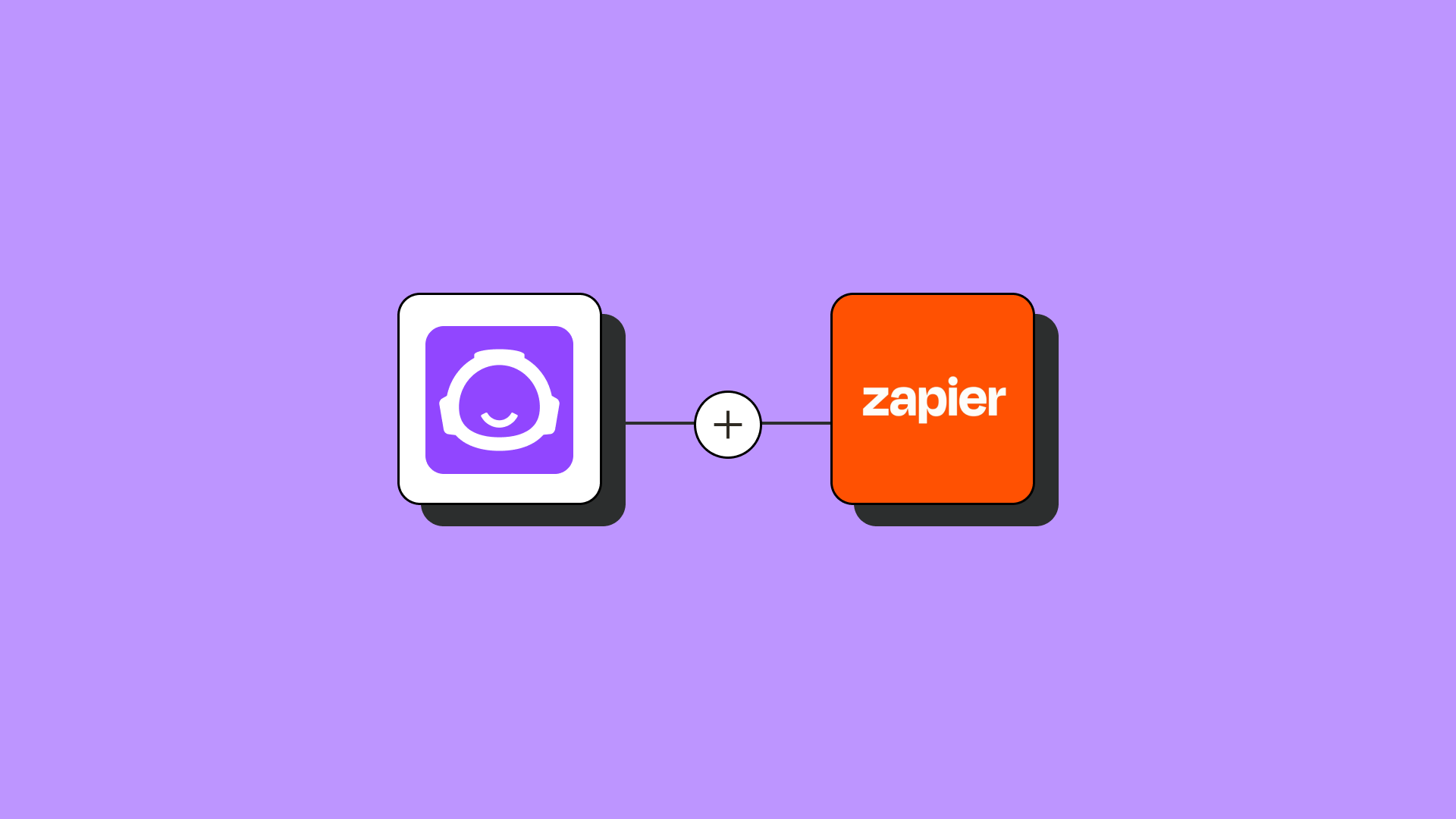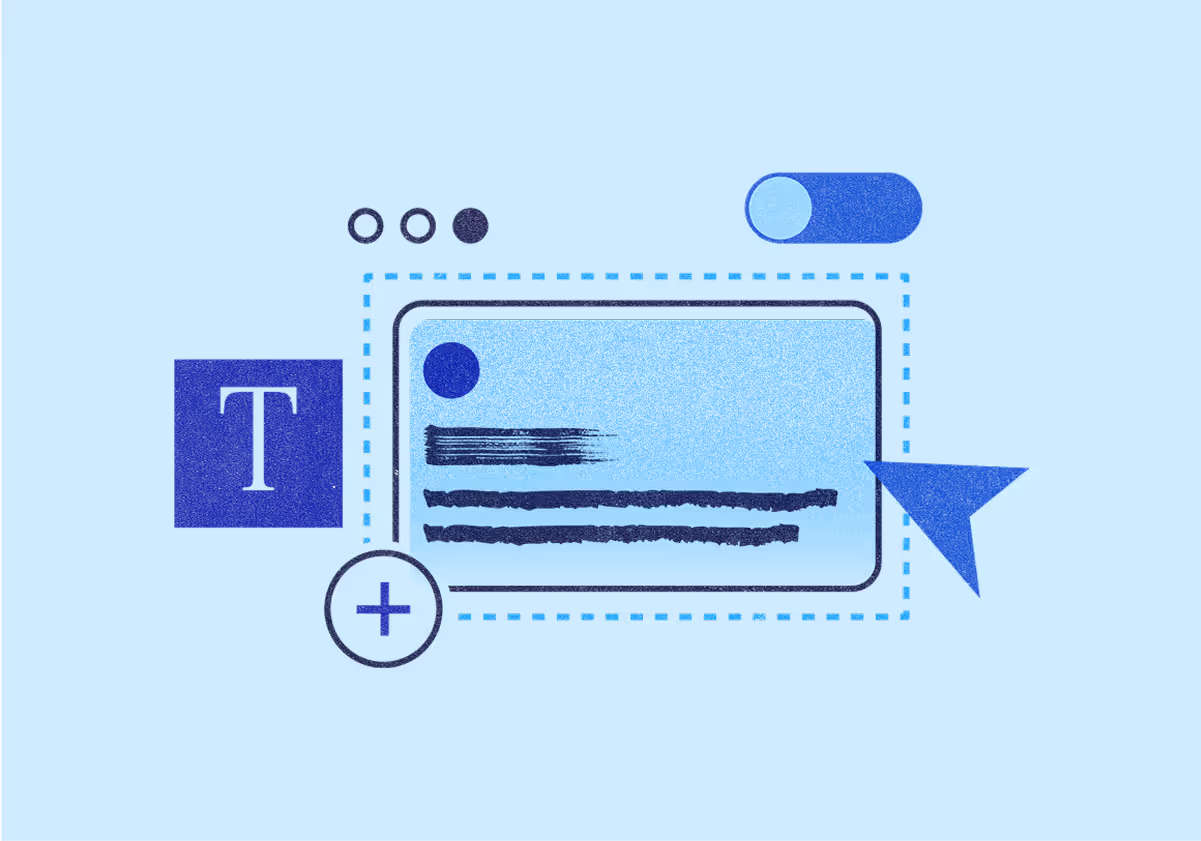Jasper Marketing
November 24, 2024
How to Automate Your Workflows With AI
AI workflow automation is becoming one of the main levers organizations can modernize their operations. Here's how.

In many organizations, automation is the keystone that makes meaningful efficiency and cost reduction achievable. As part of a growing trend, businesses are taking their automation efforts to the next level with artificial intelligence.
AI can drive automation to new levels, which allows businesses to scale their operations and achieve growth faster than ever. The question is: How can businesses use AI workflow automation to transform their operations? We’ll answer this question and more.
What Is AI Workflow Automation?
AI workflow automation refers to the use of artificial intelligence to streamline, optimize, and automate repetitive tasks and processes, enhancing efficiency and decision-making across various workflows.
AI workflow automation is becoming one of the main levers organizations can use to achieve desired outcomes, modernize their operations, and fundamentally transform how work gets done.
Steps To Implement AI Workflow Automation in Your Marketing Strategy
So, you’ve heard all the buzz about AI workflow automation and how it’s supposed to make your life easier (and your marketing more effective). But where do you even begin? Let’s break it down into five easy-to-follow steps so you can start making AI work for you, not the other way around.
1. Identify repetitive tasks
First things first: take a good, hard look at your marketing processes. Where are you spending the majority of your time doing the same things repeatedly? Whether scheduling social media posts, sending follow-up emails, or analyzing campaign data, these repetitive tasks are prime candidates for AI automation. The idea is to find routine work that can be handled by a smart AI tool. Once you identify those tasks, you’re on your way to freeing up time for more creative work.
2. Choose the right AI tool
Now that you’ve pinpointed what needs automation, it’s time to find the right AI tool to handle it. You want a tool that aligns with your specific needs—whether it’s content creation, data analysis, or customer segmentation. Look for tools with a solid track record in your industry, and make sure they’re scalable to fit your future growth.
3. Integrate AI into your existing workflows
Once you’ve got your AI tool, it’s time to integrate it into your current workflows or, in other words, set it up to work alongside your existing systems. Ensure the tool syncs well with your CRM, email marketing platforms, and any other tech you rely on. Don’t forget that a tool that integrates smoothly into your existing tech stack is key. You don’t want to end up with an AI tool that’s more of a hassle to implement than it is worth.
4. Conduct tests before launch
Before implementing an AI workflow, give it a test run. Test it out in smaller, controlled environments to see how it performs with real data. Are there any bugs? Does it integrate properly with your other systems? This is your chance to catch any issues early, tweak the settings, and make sure everything works before you go full throttle.
5. Measure results and optimize
After launching your AI workflows, measure the results—look at how much time is saved, how much more efficient your campaigns are, and whether the AI tool is hitting the goals you set. Based on what you learn, optimize the workflows. AI is great, but it’s not a set-it-and-forget-it solution. Continually adjust your approach to get the most out of your AI automation. Remember, AI is always learning and improving, so don’t be afraid to fine-tune as you go.
How to Automate Your Workflows With AI: Use Cases and Best Practices
By automating recurring tasks, AI makes it possible to orchestrate an integrated process flow and execute tasks uniformly and consistently, whereas humans using manual controls can (and do) make mistakes. Let’s look at ways to automate your workflows with AI and some common use cases that can boost your efficiency.
Use pre-built integrations
Integrations are crucial in streamlining processes and enhancing workflow efficiency by connecting two or more commonly used platforms and tools.
If you’re like most marketers, you already have a stack of tools you rely on (think CRMs, email platforms, social media schedulers, you name it). The good news? Many AI tools come with out-of-the-box integrations for the most popular platforms. Whether it’s automatically syncing customer data from your CRM or posting social media content based on predefined schedules, pre-built integrations save you time and let you hit the ground running.
Using the Jasper and Webflow integration, creating a new website or adding fresh pages to your existing site has never been easier. You can create new copy, rewrite, and translate content on your site within your business’s style guide and brand voice.
Another example is the Jasper and SEOSurfer integration, which lets you analyze and compare your content against what’s already ranking. This content writing workflow allows you to use Surfer to audit and optimize existing content and rely on Jasper to write fresh and relevant content faster than ever before.

Use APIs for AI workflow automation
What if you’re more advanced and want to get into the weeds with customization? Enter APIs (Application Programming Interfaces), which are the secret sauce to ensuring AI tools talk to each other seamlessly.
In other words, an API is a tool that makes data and functionality from one application or website available for use in other applications. The best part? APIs give you the power to design AI workflows as unique as your marketing strategy.
The Jasper API allows you to automate marketing workflows or create content at scale. For example, using Jasper’s API, you can create product descriptions at scale from information in an internal system (e.g., product specs). Another common use case is rewriting copy on your web pages to keep content up to date, inject SEO keywords, and ultimately improve traffic to your site.

Use Automation Platforms
If you want something that combines ease of use with advanced functionality, you can try automation platforms such as Zapier and Make. With minimal coding, these platforms let you build automated workflows across all your tools. And don’t worry—automation platforms don’t need to be scary. There are many pre-built templates to get you started, so you’re not reinventing the wheel whenever you want to automate something.
With Zapier, you create custom workflows called Zaps, which follow the same logic: When this happens, do that. For example, you can automate blog post creation using Google Forms responses. Using this integration, you can automatically respond to each new incoming Google Forms response by creating a blog in Jasper and then updating your project management tool (such as monday.com board).
You can also create an AI workflow that lets you automate the creation of content outlines. Using this integration, Jasper creates outlines based on a new project added to Asana and then sends them straight to a Google Doc so you can start writing.

You can also use Make to build your Jasper AI workflows by choosing triggers, actions, and searches. For example, you can set up a Jasper automation that transforms a prospect’s account info in Hubspot or Salesforce into a comprehensive account-based marketing plan or an industry-focused campaign.
This way, you can use the account’s records and ask Jasper to give you an outline for an entire ABM campaign, including emails, blogs, social posts, webinars, ebooks, and more.
5 Tools for AI Workflow Automation in Marketing
Looking for ways to get started with AI workflow automation but not sure which tools to use? Here are five tools to take your marketing game to the next level.
- Jasper (for AI-driven content creation): If scaling your content creation pipeline is on your list of priorities, check out Jasper—a purpose-built generative AI platform for marketing. Jasper doesn’t just help you come up with ideas. It can generate full-fledged blog posts, email copies, product descriptions, and more.
- HubSpot (for inbound marketing and CRM automation): From automating email workflows to managing your CRM, HubSpot’s AI tools help you nurture leads and keep everything running smoothly behind the scenes. With HubSpot, you can automate lead scoring, send personalized content at the right time, and manage your entire customer journey with ease.
- Klaviyo (for email campaign automation): This AI-powered tool automates everything from welcome emails to post-purchase follow-ups, all while personalizing content based on customer behavior. Klaviyo integrates seamlessly with ecommerce platforms like Shopify, making it easy to segment your audience and send them targeted emails.
- Hootsuite (for social media automation): With this tool, you can automate your social media posts, track performance across platforms, and even respond to messages—all from a single platform. The AI functionality helps you schedule content at the best times for engagement so you’re always on top of your social game.
- Salesforce Einstein (for AI-powered CRM and customer insights): This AI tool helps you make sense of customer data, offering predictions and recommendations to drive smarter marketing decisions. You can use insights to boost engagement, build highly personalized customer journeys, and automatically customize outreach.
Fuel Your Marketing with AI Workflow Automation Today
Artificial intelligence has significantly raised the bar on automation. Using AI workflow automation, you can put routine tasks on autopilot, freeing up resources for more strategic initiatives. Ready to bring some AI magic into your everyday workflows? Check out Jasper today.
More of the latest & greatest

Gemini 3 Pro in 24 Hours: Inside Jasper’s LLM-Optimized Architecture
How does Jasper validate new AI models like Gemini 3 Pro in under 24 hours? Inside our rigorous 3-step testing process for enterprise marketing.
December 4, 2025
|
Nick Hough

3 Predictions for AI in Marketing in 2026
In 2026, AI will rewire teams, streamline tooling, and turn content into a competitive engine.
December 2, 2025
|
Loreal Lynch
.png)
Highlights from Jasper Assembly: Scaling Content with Confidence
Discover key insights from Jasper Assembly 2025. Leaders from Sanofi, NetApp, U.S. Bank, and BCG shared AI marketing strategies for scaling content and driving impact.
November 19, 2025
|
Loreal Lynch













